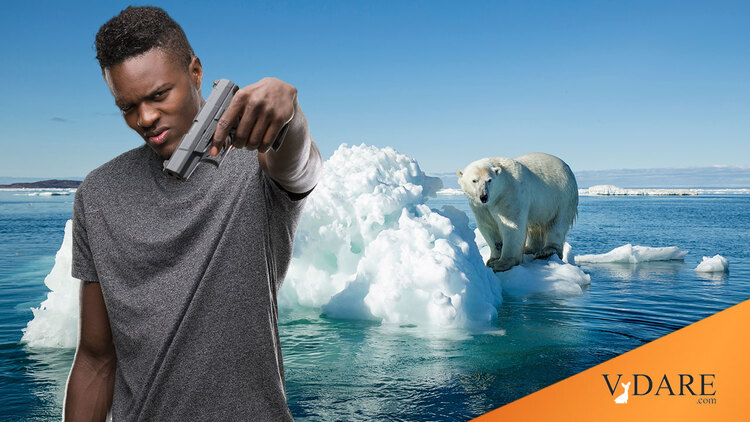


By Steve Sailer
12/22/2022
From The Guardian news section:
Almost 8,000 US shootings attributed to unseasonable heat — study
Research suggests climate crisis may contribute to increased gun violence by pushing temperatures beyond normal ranges
Damian Carrington Environment editor
@dpcarrington
Fri 16 Dec 2022 11.00 ESTAlmost 8,000 shootings in US cities in recent years were attributable to unseasonably warm temperatures, according to a new study. The researchers said the work suggested the climate crisis could be contributing to increased gun violence by pushing temperatures beyond the normal ranges.
My analysis found that from 1999-2021, blacks were 22% more likely to die by homicide in June-August than in December to February, Hispanics 18% more, and whites 7% more. Keep in mind that that, on average, blacks and Hispanics tend to live in the USA at lower latitudes than whites, so this seasonal skew might be even greater if nonwhites lived as far north on average as whites.
Shootings were already known to peak in summer, when people are outside more and when heat can increase aggression. But the new research took account of the season and showed that above average temperatures at any time of year increased the risk of shootings.
OK, but to say that if there are more shootings in March in Minneapolis on an unseasonably pleasant day when it’s 60 degrees rather than 30 degrees is not to say that heat is influencing the shootings but to say that mildness is.
You might have one model in mind in which shootings are driven by unbearably hot conditions inside un–air conditioned homes. But the methodology of this study focusing less on absolute warmth than on relative warmth for the time of the year is attuned more to picking up the increased shootings on days when people say, hey, it’s nice out, I’m going to party (but I should take my Glock because all those guys I’ve been dissing online are probably going out to party and taking their Glocks too).
The study, the largest to date on the issue, assessed shooting in 100 US cities from 2015 to 2020. …
“We saw a really consistent overall relationship between temperature and a higher risk of shootings,” said Dr Vivian Lyons, at the University of Washington, Seattle, who led the research. “When we are aware that firearm violence is more likely to happen on hotter days, regardless of the season, it can help inform violence prevention efforts.
“There is a concern I have, after the study, that firearm-related violence will rise as climate change continues.”
The new research is published in the journal Jama Network Open. It found that in the 100 US cities with the highest number of firearm shootings, 7,973 shootings were attributable to above average temperatures, comprising 6.85% of all shootings. The shootings were firearm incidents with at least one person killed or injured. Suicides were not included.
The increased risk of gun violence was highest on days when temperatures were well above average, but the three-quarters of the shootings attributed to raised heat were on days only moderately above average.
In other words, shootings tend to happen on nice rather than hot days. As I’ve been arguing, homicides and car crashes tend to be Deaths of Exuberance.
“Our work suggests that climate change, which may elevate daily temperatures above normal ranges, may contribute to increased firearm violence,” the researchers said.
There are two main ideas to explain how warmer temperatures can increase shootings. Rising heat increases stress hormones, which can increase aggression. Higher temperatures can also increase time spent outside and social contacts, raising the potential for disputes. For most cities, the highest increased risk of shootings was between 29C (84F) and 32C.
Extremely hot temperatures, above 90F, tended to see shootings decline as people stayed home.
According to this study, heat is most homicidal in Minneapolis, whereas warm days are below average in lethality in Miami, Los Angeles, Phoenix, and San Diego.
In other words, high temperatures don’t actually seem to encourage murder in modern America; instead, mildness facilitates gregariousness, which is what tends most to lead to blacks shooting each other: contact with each other.